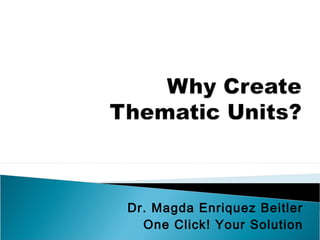The document discusses thematic instruction, which involves teaching multiple subjects around a central theme. [1] Teachers coordinate lessons across subjects like math, science, literature to connect to a theme. [2] Themes are usually broad concepts or systems that are meaningful to students and connect to their lives. [3] Lessons are planned so skills and knowledge from different subjects build on each other within the context of the theme.











































